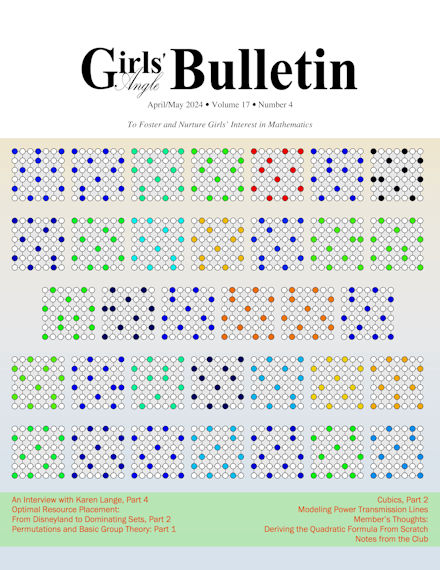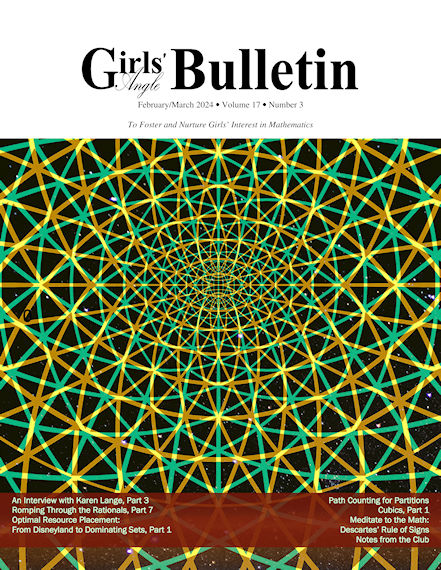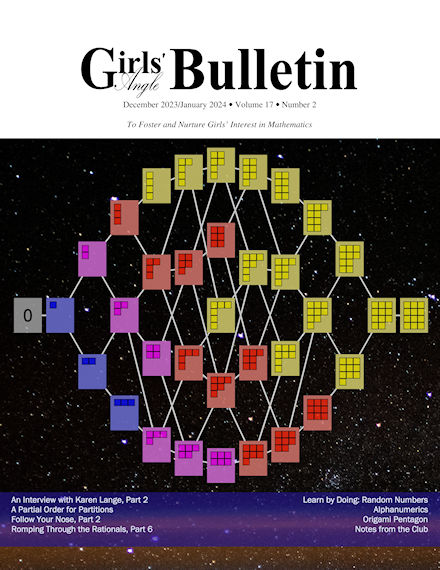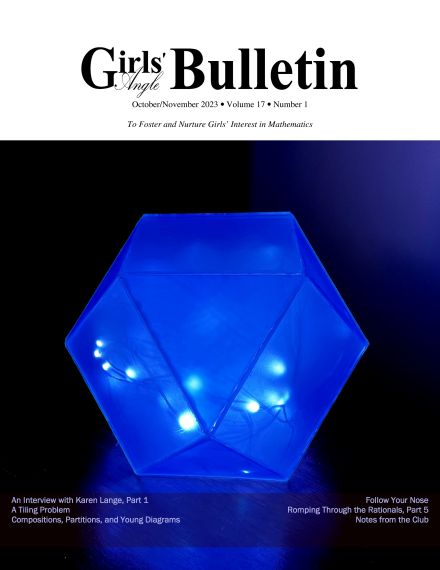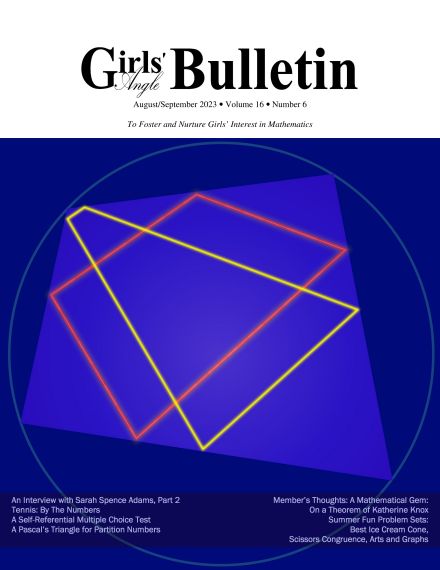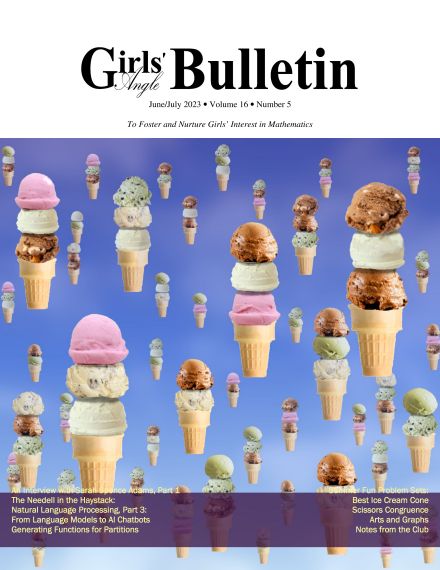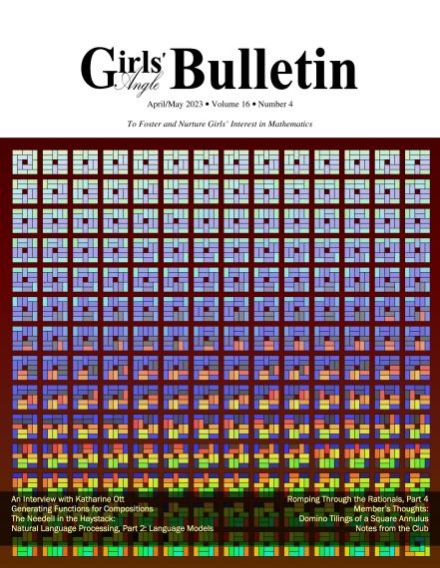Can you figure out why the cover image is entitled Complete Domination?
We open with the conclusion of our four-part interview with the Theresa Mall Mullarkey Associate Professor of Mathematics at Wellesley College, Karen Lange. In this installment, Prof. Lange goes into further depth about her field of research: complexity theory. She discusses the importance of persistence in mathematics. And, she talks about a good frame of mind to have when doing mathematics. Her concluding words: “Where do I get stuck or frustrated? It’s where I’m starting to think of where I should be with the math, which is exactly where anybody doing math gest frustrated. What’s actually going to help you get there is realizing we’re all on this journey, and it’s a lifelong journey. You’re never there. There’s always more to be learned and experienced.” Cheers!, Prof. Lange, and thank you for this wonderful interview!
Next, comes Part 2 of Optimal Resource Placement by Jillian Cervantes and Prof. Pamela E. Harris, both at the University of Wisconsin at Milwaukee. Their article inspired the cover image of this issue.
Robert Donley extends his series to a fourteenth installment that covers the basic of permutations and group theory.
Lightning Factorial continues tackling cubic equations in Cubics, Part 2 and succeeds in finding a way to find the solutions, but the method leaves more questions than answers…
In Member’s Thoughts we describe a very nice way of deriving the quadratic formula that one of our member’s found last fall.
We conclude with Notes from the Club.
We hope you enjoy it!
Finally, a reminder: when you subscribe to the Girls’ Angle Bulletin, you’re not just getting a subscription to a magazine. You are also gaining access to the Girls’ Angle mentors. We urge all subscribers and members to write us with your math questions or anything else in the Bulletin or having to do with mathematics in general. We will respond. We want you to get active and do mathematics. Parts of the Bulletin are written to induce you to wonder and respond with more questions. Don’t let those questions fade away and become forgotten. Send them to us!
Also, the Girls’ Angle Bulletin is a venue for students who wish to showcase their mathematical achievements that go above and beyond the curriculum. If you’re a student and have discovered something nifty in math, considering submitting it to the Bulletin.
We continue to encourage people to subscribe to our print version, so we have removed some content from the electronic version. Subscriptions are a great way to support Girls’ Angle while getting something concrete back in return. We hope you subscribe!

